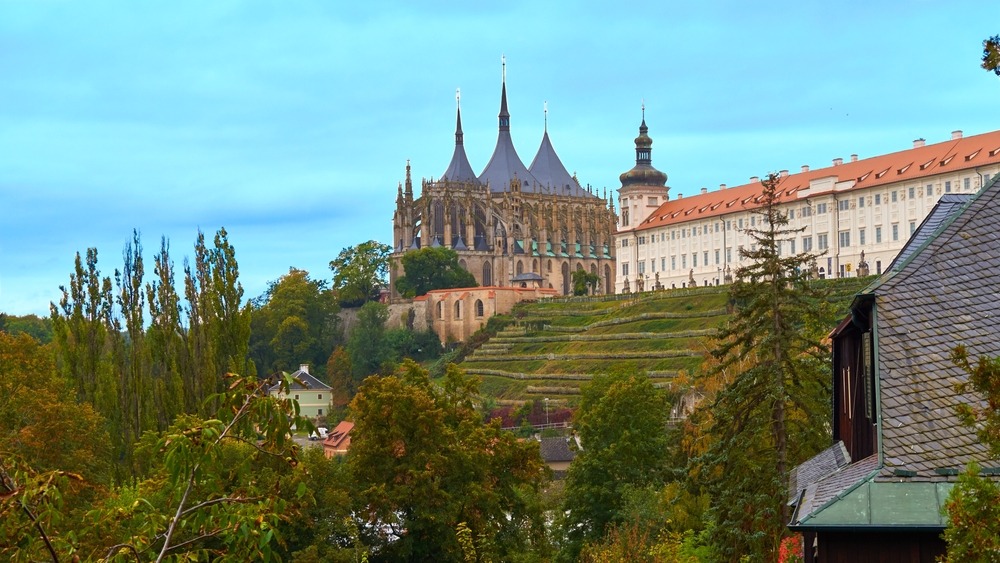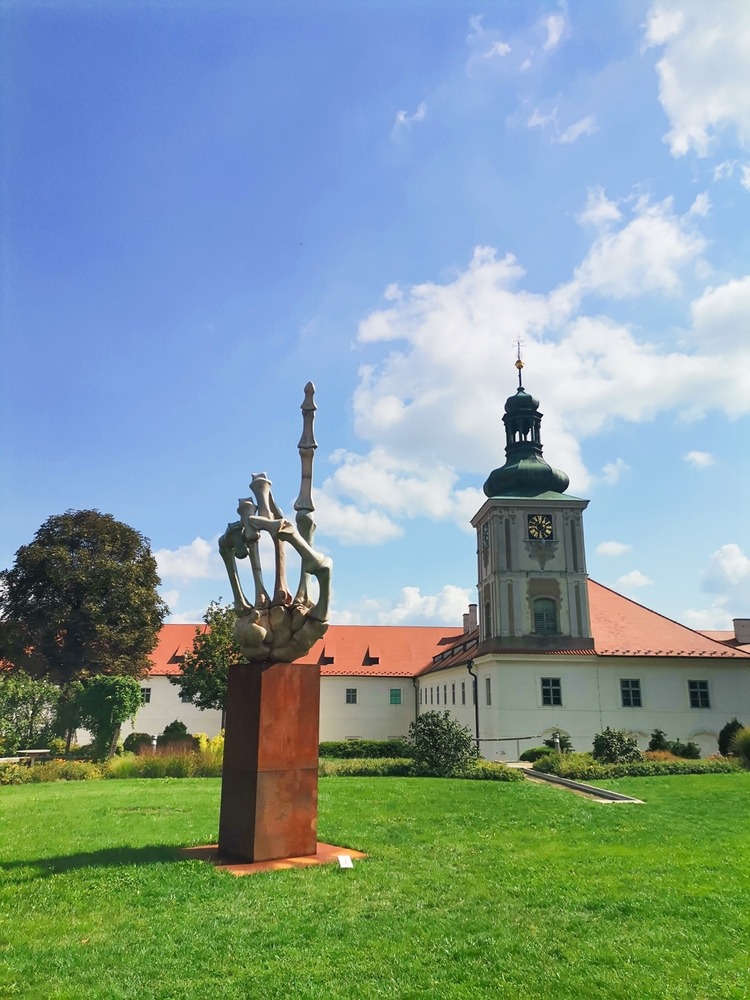Kutná Hora: Silver Veins and Gothic Grandeur in Bohemia
History of Kutná Hora – The City of Silver and Sovereignty
Tucked into the gentle hills of Central Bohemia, the town of Kutná Hora has long stood as a symbol of economic might, architectural elegance, and spiritual grandeur. Its name may not be as internationally renowned as Prague, but in medieval times, Kutná Hora was the economic heartbeat of the Kingdom of Bohemia, second in importance only to the capital itself.
The origins of Kutná Hora date back to the late 13th century, although silver mining had already begun in the region even earlier. The area was initially settled by Cistercian monks from the nearby Sedlec Abbey, who discovered rich silver deposits in the region. The name “Kutná” is thought to derive from the Czech word kutati—to mine.
By the mid-13th century, the influx of miners and merchants transformed the quiet hills into a booming mining settlement. In 1300, King Wenceslas II of Bohemia issued the “Ius regale montanorum”, a royal mining code that regulated silver extraction and established Kutná Hora as the royal minting town, producing the Prague groschen—one of medieval Europe’s most stable and widely circulated currencies.
The town’s prosperity brought enormous influence. During the 14th and 15th centuries, Kutná Hora flourished not only as a mining hub but also as a political player. Its importance was underscored when King Wenceslas IV built his royal residence here, and later, during the Hussite Wars, the town became a critical stronghold for Catholic forces. Despite being burned and pillaged during these religious conflicts, the city rebounded and remained wealthy into the Renaissance.
However, the 16th century saw a gradual decline. The silver veins began to dry up, and recurrent fires, plagues, and wars—particularly the Thirty Years’ War—ravaged the population and infrastructure. By the 18th century, Kutná Hora had largely lost its economic status, though its rich historical and architectural legacy remained.
In 1995, UNESCO designated the “Historic Centre of Kutná Hora” as a World Heritage Site, recognizing its exceptional blend of Gothic, Renaissance, and Baroque architecture, as well as its role in the cultural and economic development of medieval Europe. Today, Kutná Hora is a town of roughly 20,000 inhabitants, visited by hundreds of thousands of travelers every year drawn to its haunting beauty, sacred sites, and stories carved in stone and silver.

Top 25 Attractions in Kutná Hora
1. St. Barbara’s Church (Chrám svaté Barbory)
The crown jewel of Kutná Hora, this UNESCO-listed Gothic cathedral is dedicated to the patron saint of miners. Construction began in 1388 and spanned over 500 years. Its soaring flying buttresses, ribbed vaults, and spectacular frescoes make it one of the most magnificent Gothic churches in Central Europe.
2. Sedlec Ossuary (Kostnice Sedlec)
One of the most macabre yet fascinating sites in the world, the Sedlec Ossuary is a small chapel decorated with the bones of over 40,000 individuals. Skulls and bones are arranged in chandeliers, pyramids, and a jaw-dropping coat of arms. It’s a powerful reminder of mortality and medieval faith.
3. Italian Court (Vlašský dvůr)
Once the royal mint and temporary residence of Bohemian kings, the Italian Court was the administrative heart of Kutná Hora’s silver boom. Today it houses the Czech Minting Museum and royal chapel, where visitors can mint their own coins and explore its regal chambers.
4. Cathedral of the Assumption of Our Lady and Saint John the Baptist (Sedlec Cathedral)
This early Gothic cathedral, later rebuilt in Baroque Gothic style by the famed architect Jan Blažej Santini-Aichel, was part of the oldest Cistercian monastery in Bohemia. It’s known for its soaring nave, sacred relics, and restored frescoes.
5. Jesuit College
Facing St. Barbara’s Church, this imposing Baroque structure once trained young Jesuits. Now it houses the GASK (Gallery of the Central Bohemian Region), showcasing contemporary art in a stunning historical setting.
6. Stone House (Kamenný dům)
One of the finest examples of Gothic civil architecture in Bohemia, this 15th-century home is now a museum that provides insights into medieval life in Kutná Hora. Its ornate façade and restored interiors are remarkable.
7. Plague Column (Morový sloup)
Erected in the early 18th century, this Baroque column commemorates the end of a devastating plague that struck the town. It’s richly adorned with religious figures and located near the center of town.
8. Church of Saint James (Kostel svatého Jakuba)
Another Gothic gem, this church features a single, towering steeple and holds centuries of Kutná Hora’s religious and social history. It’s one of the earliest large churches in the city, begun in 1330.
9. Corpus Christi Chapel
Built as a bone repository, this late Gothic chapel near St. Barbara’s Church was never completed but remains an atmospheric ruin that adds to the town’s mysterious charm.
10. Sankturin House (Sankturinovský dům)
Dating from the 13th century, this house contains parts of the oldest stone building in town. It now serves as the main tourist information center and often features exhibitions.
11. GASK – Gallery of Central Bohemian Region
Housed in the former Jesuit College, this art museum presents a contrast of modern exhibitions within a centuries-old architectural marvel. Its collection spans post-World War II Czech and European art.
12. Hrádek (Little Castle) – Czech Museum of Silver
This fortified Gothic residence once belonged to noblemen and mining overseers. Now, as the Czech Museum of Silver, it offers detailed exhibitions on mining techniques and the town’s minting legacy—including underground mine tours.
13. Minting Alley (Hrádecká ulička)
Adjacent to Hrádek, this narrow, cobbled street was once used by mint workers and visitors. Today it offers a scenic route with preserved medieval ambiance.
14. Ruthardka Street
A charming lane lined with historic buildings, artisan shops, and small cafes. It provides one of the best preserved walks through the medieval heart of Kutná Hora.
15. St. Ursula’s Chapel Ruins
The romantic ruins of this chapel offer a quiet escape and a picturesque spot for reflection or photography. Once part of a convent, its bare Gothic bones remain intact.
16. Gothic Stone Fountain (Kamenná kašna)
This late Gothic public fountain from 1495 once provided fresh water to townspeople. It’s intricately decorated and remains an example of functional civic art.
17. Church of Saint John of Nepomuk
A smaller Baroque chapel near the Italian Court, dedicated to the Czech national saint. Its interior is richly ornamented with gilded stuccoes and dramatic religious artwork.
18. Silver Mining Shafts
Part of the Museum of Silver experience, these preserved shafts plunge visitors into the underground world of medieval miners. Equipped with helmets and lamps, guests walk the same tunnels that once carried silver to the surface.
19. Church of All Saints (Kostel Všech svatých)
The church adjoining the Sedlec Ossuary, it served as a burial chapel and remains part of the broader Sedlec ecclesiastical complex.
20. Rehbein House
One of Kutná Hora’s oldest surviving buildings, this house is an impressive example of 13th-century Romanesque-Gothic residential architecture, now used for cultural events and tours.
21. Viewpoint at Havlíčkovo náměstí
This town square offers panoramic views of the surrounding rooftops, steeples, and countryside. It’s a great starting point for a walking tour of the town center.
22. Tyl House (Tylův dům)
Named after playwright Josef Kajetán Tyl, who was born here, the house now contains memorabilia and exhibits honoring Czech theatre and literary history.
23. Loreto Chapel and Cloister
Modeled after the famous Loreto in Prague, this small religious complex offers an intimate look at Marian devotion and local Baroque artistry.
24. Church of the Holy Trinity (Kostel Nejsvětější Trojice)
A late Baroque parish church with elegant stucco decoration, located on the edge of the historic center. Its interior houses a fine organ and altar.
25. Former Monastery Gardens
Surrounding the Jesuit College and Sedlec Cathedral, these peaceful gardens are ideal for strolling and enjoying views of the town’s architectural ensemble.

A World Heritage Destination
Kutná Hora is a rare fusion of wealth, piety, artistry, and mortality—woven through silver veins beneath the earth and vaulted stone spires above it. Whether exploring the haunting symbolism of the Sedlec Ossuary or marveling at the grandeur of St. Barbara’s Church, visitors are constantly reminded of the town’s dual legacy as both a mine of material riches and a cradle of spiritual and cultural depth. Its cobblestone streets, medieval fortifications, and majestic churches remain an enduring testament to a city once powerful enough to shape the fate of a kingdom.

































